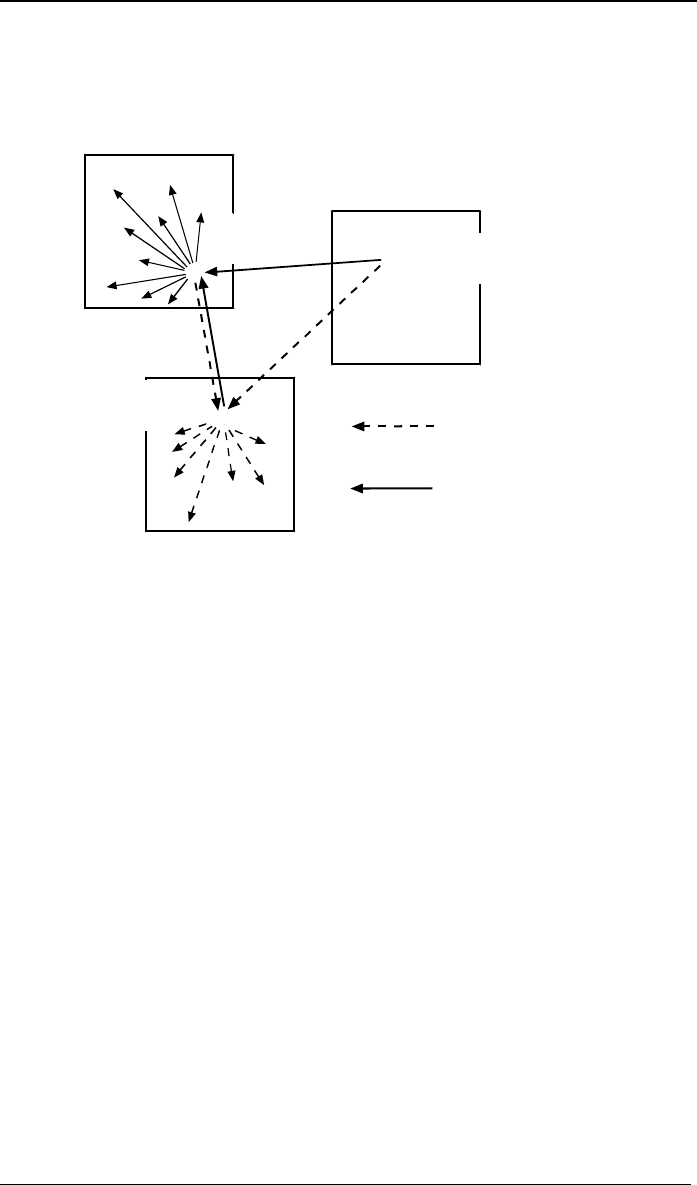
MultiVOIP User Guide E1 PhoneBook Configuration
361
Similarly, the VOIP system allows Wren Clothing employees in London
and Amsterdam to call anywhere in France at French national rates; it
allows Wren Clothing employees in Paris and Amsterdam to call
anywhere in the United Kingdom at its national rates.
France
The
Netherlands
5
5
Wren Clothing Co.
VOIP/PBX Site
London
5
Wren Clothing Co.
VOIP/PBX Site
Amsterdam
Wren Clothing Co.
VOIP/PBX Site
Paris
United Kingdom
Calls at French
National Rates
Calls at UK
National Rates
Inbound versus Outbound Phonebooks
To make the VOIP system transparent to phone users and to allow all
possible free and reduced-rate calls, the VOIP administrator must
configure the “Outbound” and “Inbound” phone-books of each VoIP in
the system.
The “Outbound” phonebook for a particular VOIP unit describes the
dialing sequences required for a call to originate locally (typically in a
PBX in a particular facility) and reach any of its possible destinations at
remote VOIP sites, including calls terminating at points beyond the
remote VOIP site.
The “Inbound” phonebook for a particular VOIP unit describes the
dialing sequences required for a call to originate remotely from any
other VOIP sites in the system, and to terminate on that particular
VOIP.
Briefly stated, the MultiVOIP’s Outbound phonebook lists the phone stations
it can call; its Inbound phonebook lists the dialing sequences that can be used
to call that MultiVOIP. (Of course, the phone numbers are not literally
“listed” individually.) The phone stations that can originate or
complete calls over the VOIP system are described by numerical rules
called “destination patterns.” These destination patterns generally
consist of country codes, area codes or city codes, and local phone
exchange numbers.


















